14 Types of Black Birds in Tennessee (with Pictures)
Last Updated on
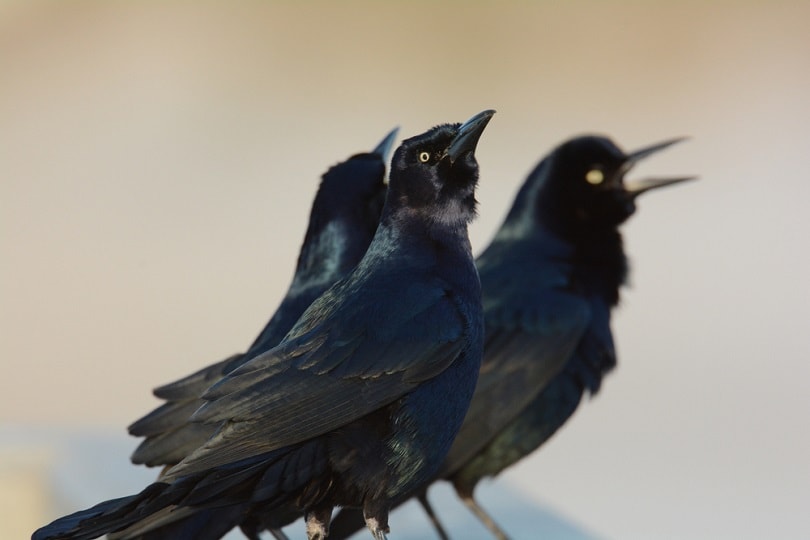
Tennessee is home to many different black birds. This is to be expected since Tennessee is basically a giant forest. With so many trees and habitats to live in, there are many different species that can thrive.
However, this can make identifying black birds challenging. After all, there are simply a lot of possibilities to pick from. Luckily, most of these species are quite different, though. Therefore, with a bit of background knowledge, you can identify different species pretty easily.

The 14 Types of Blackbirds in Tennessee
1. European Starling

Unlike how the name suggests, European Starlings are not only in Europe. This species was introduced to the United States and has thrived in many locations, including Tennessee. Therefore, it isn’t odd to spot them in Tennessee.
These birds gather together in huge groups. Therefore, if you notice a swarm of blackbirds, you’re probably looking at starlings. They flock together at dusk, so it is common to see huge flocks at this time. Close-up, these birds can look quite iridescent, with purples, blues, and greens mixed into their black feathers. They’re pretty stocky, as well.
Starlings are considered a “problem species” because they are invasive and form very large flocks. They can out-compete native birds in the area, damaging their populations. Plus, huge flocks can also decimate crops.
2. Red-Winged Blackbirds
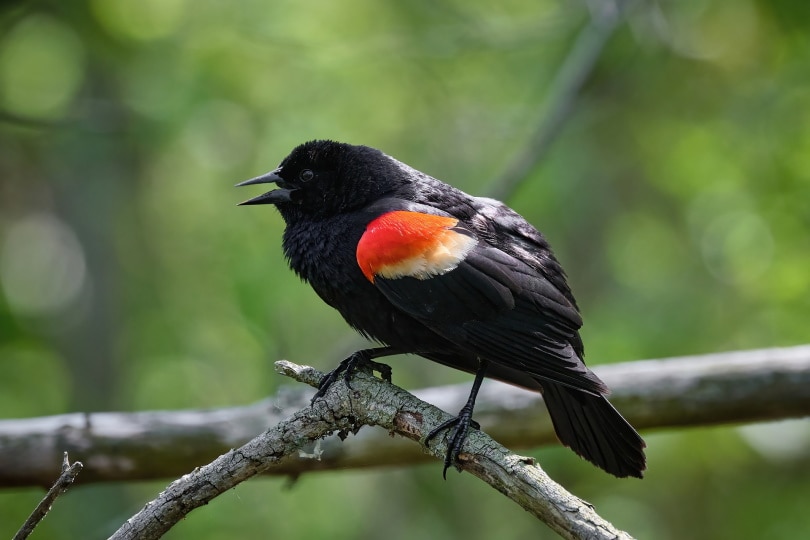
While these birds are mostly black, Red-Winged Blackbirds also have very obvious red markings on their wings. Therefore, they are pretty easy to identify, especially when they are flying. While males are completely black, females are less striking and tend to be a dull brown color.
These birds are rather common throughout the continental United States. Usually, you’ll see them sitting on telephone wires or other high perches. Males are extremely territorial, so there is usually only one male (though one male can court up to 15 females) in an area. However, they will flock together in the winter outside of breeding season.
Typically, these birds prefer marshy areas.
3. Common Grackle

Grackles are pretty easy to identify and not difficult to spot, despite being a near-threatened species. These birds have glossy bodies and iridescent, blue heads. Females are slightly less glossy than males, though this can be hard to determine in the field.
Common Grackles are lean and lanky compared to other birds. Their tails are also quite long. You can find them just about anywhere, and they tend to be less fearful of humans than other species. Therefore, they commonly inhabit urban places and areas where human food is plentiful.
Although these birds often stick together and appear numerous, their numbers have dropped by over 50% since the 1970s.
4. Brown-Headed Cowbird
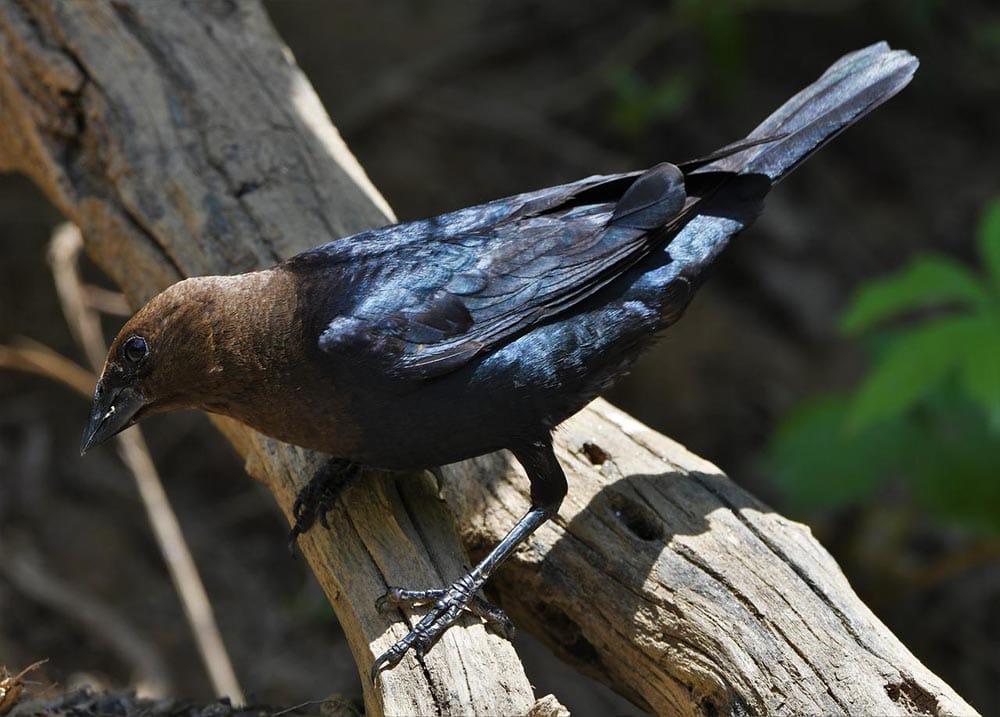
Only male cowbirds are black with a brown head, as their name suggests. However, the females are completely brown and appear very ordinary. Usually, these birds are spotted in the summer when they are most active, but they do live in Tennessee year-round.
Usually, these birds prefer grasslands and fields, which is why they tend to be seen around cows. They will venture into forested areas when food is scarce, though. They tend to wander around grazing animals and wait for them to kick up food as they walk and eat. Grasses and weed seeds make up the majority of a cowbird’s diet.
These birds do not build their own nests. Instead, they lay their eggs in the nests of other songbirds, who then raise the babies. If their eggs are removed from the nest, they will often harass the songbird or destroy their eggs.
5. Orchard Oriole
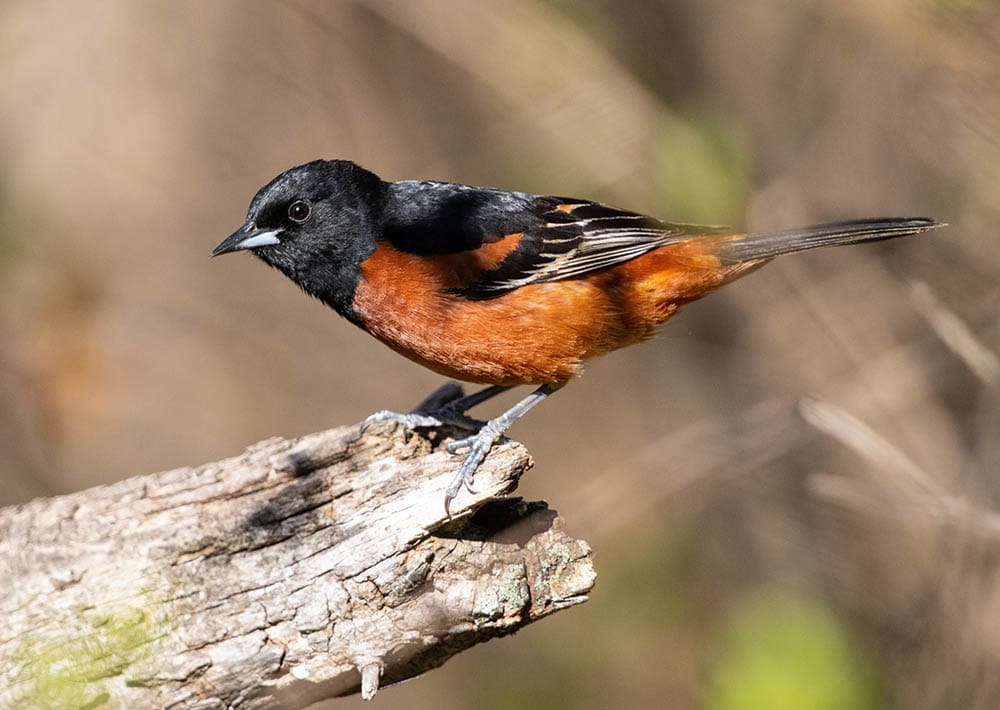
A male orchard Oriole is mostly black with a reddish-tan belly. In comparison, females are bright yellow and look completely different. These small birds only hang in Tennessee during the breeding season, though. The best months to spot them are in April through August.
These birds are often found in woodland, preferring riverbanks and shrubland. However, you can also find them on farms and in backyards pretty easily. They fed on mostly insects, including ants, grasshoppers, and spiders. However, they will also eat fruit and drink nectar from flowers.
Their nests are suspended from tree limbs with long grasses so it is pretty easy to identify their nests compared to other birds.
6. Baltimore Oriole

The males in this species have a black and orange coloration, while the females are yellowish-brown. The males also have white wing bars, which sometimes helps identify them apart from other species. Because of their bright coloration, they are pretty easy to identify.
These birds are about the size of a robin, though they are leaner. They are also members of the blackbird family, like all birds on this list. As migratory birds, they only spend the breeding season in Tennessee. After that, they travel to Central America.
These birds mostly eat insects, including pest species, such as grasshoppers. Therefore, they are often a welcome sight by farmers. They will eat fruit and nectar, as well, which can be an easy way to attract them to your yard.
7. Rusty Blackbird
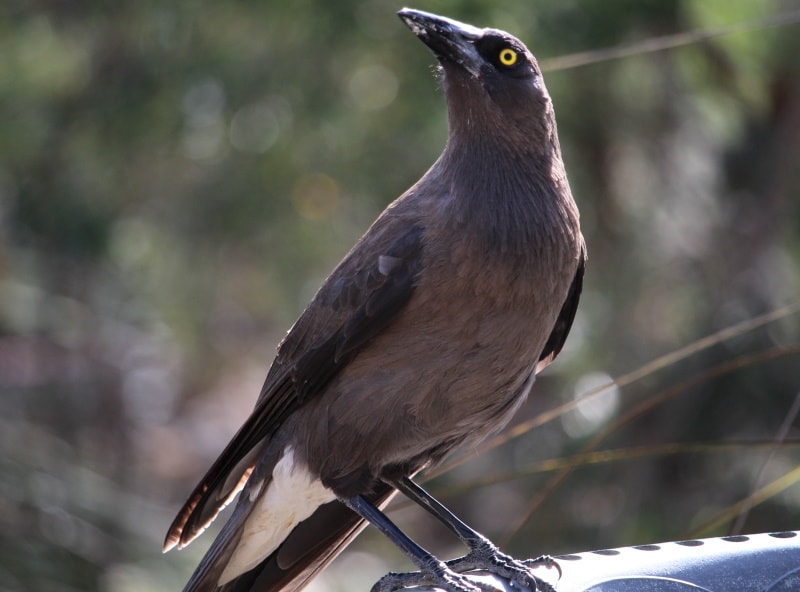
As the name suggests, these birds are mostly black. However, their face, upper back, and belly are speckled with a rusty-brown color. Truthfully, these birds simply look like they’ve gotten really muddy. However, during the breeding season, males will take on a blacker, glossier appearance in an attempt to woo a mate.
They are a vulnerable species and not a common sight. If you see one, you should consider yourself lucky. For the most part, you’ll find them near small bodies of water and in marshier areas. Their numbers have decreased by 99% over the last 40 years.
8. Eastern Meadowlark
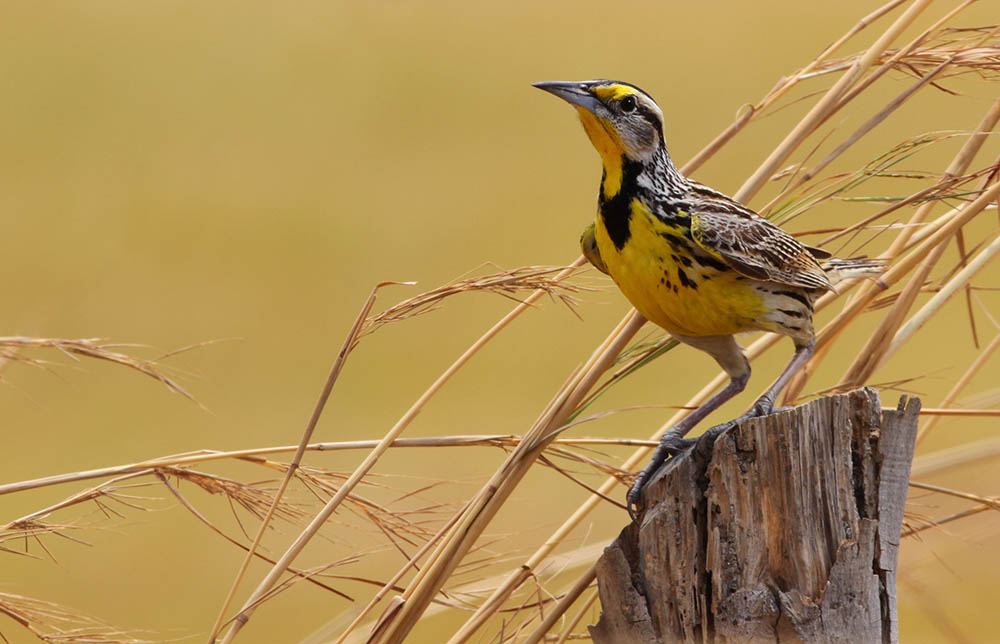
While this bird is a bit brightly colored for a blackbird, they belong to that family nevertheless. They are a near-threatened species, but you can still see them somewhat commonly in Tennessee thanks to their bright yellow undersides. They have a black spot on their chest and black spotting on their white wings, as well.
These birds are found in Tennessee throughout the year. In the early spring months, they are often putting on breeding displays that make them easier to locate. Usually, you’ll see them on the ground as they hunt for insects. However, they will also gather in larger flocks in the winter to look for seeds.
9. Bobolink

Technically, the Bobolink doesn’t live in Tennessee. However, they do migrate through the area in the spring and fall, so you may be able to see them during this time. They are pretty unusual birds, which makes them easy to identify.
The male birds have white backs and black bellies. There is a yellow patch on the top of their heads that is often described as looking like hair. The females look quite different, though, with a simple brown coloration and dark eye lines.
You’ll find these birds in open grasslands while migrating.
Sadly, this bird’s population has declined by 65% since 1966. Therefore, they are now much less common than they once were.
10. Brewer’s Blackbird
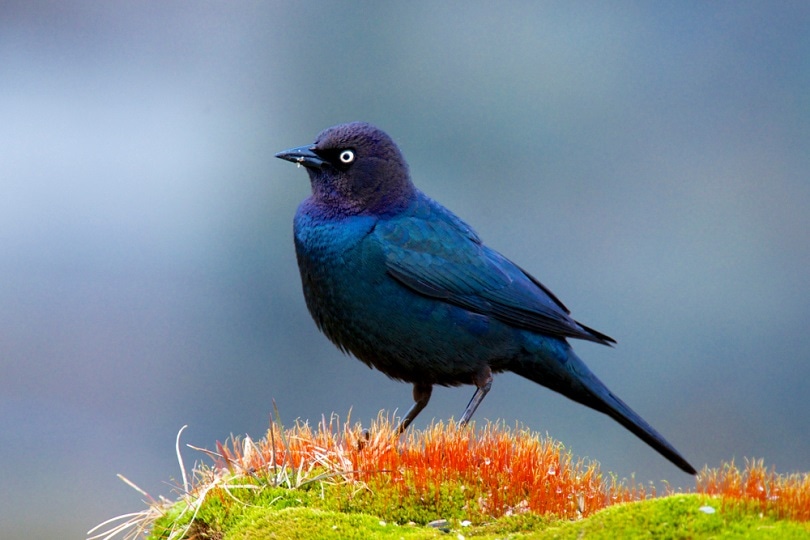
These blackbirds look just like that—blackbirds. They have very black feathers, though males have some purple coloration on their heads. Females, on the other hand, are plain brown. Therefore, looking for both genders near each other often helps with identification. They spend the whole year in Tennessee, as they do not migrate.
These birds will live just about anywhere. You can find them on grasslands, marshes, woodlands, and along the coast. They don’t mind living near humans in parks and backyards. Compared to other birds, they are very opportunistic eaters, preying on seeds and insects alike.
11. Western Meadowlark
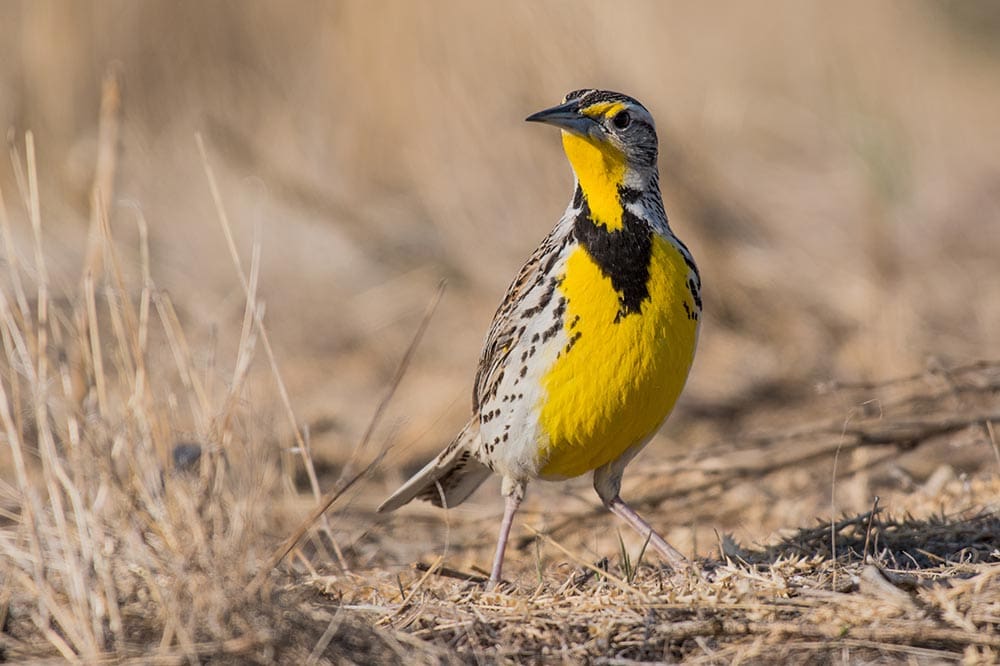
Like other meadowlarks, these birds are rarely spotted in Tennessee. However, they do occur just west of the state and are sometimes seen in western Tennessee. They are easily confused with other meadowlarks, however. They are part of the blackbird family, as you’d probably guess.
They are about the size of robins. However, their coloration is much different.
These birds prefer to forage in grasslands and fields, where they are most commonly spotted. They will form small flocks occasionally, but they also spend a lot of time alone. Their diet consists of seeds and insects. They are not very picky about what they eat.
12. Bullock’s Oriole

These birds are considered to be “accidentally” in Tennessee. They are commonly seen in Nashville. However, this isn’t actually considered part of their range. The males are bright orange with black markings. The females are a much duller black with yellow markings across their bodies.
They spend their time in open woodlands and regularly forage for insects and fruit. They will also drink nectar from some flowers. You can attract them to your backyard with sugar water, jelly, and other sweet foods.
13. Yellow-headed Blackbird
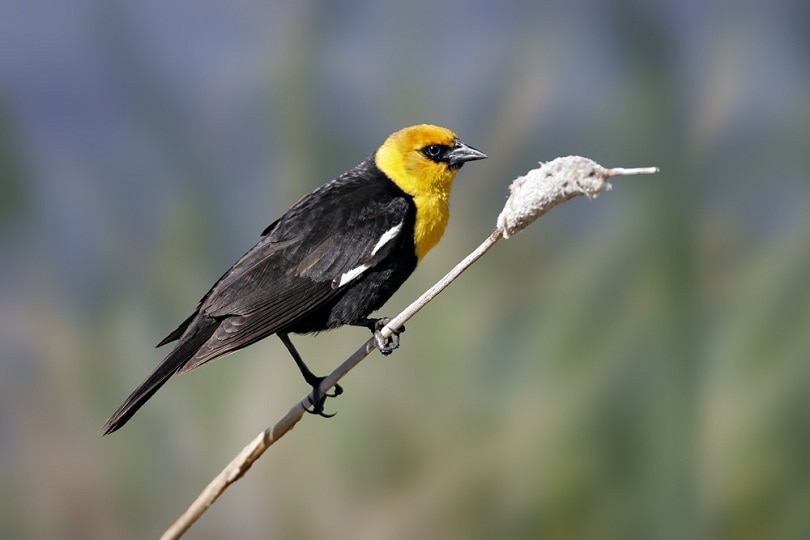
Yellow-headed Blackbirds are another rare sight in Tennessee. However, they are occasionally spotted when they “accidentally” wander into the state. Males have glossy black bodies with bright yellow heads and chests. Females are brown with a dull yellow head. They are larger than most other songbirds and blackbirds on this list.
Often, these birds are seen in wetlands, where they nest in reeds. However, they will forage in grasslands and fields, especially in search of insects in the summer. They do migrate, which is likely why they sometimes end up in Tennessee.
14. Boat-tailed Grackle

This type of Grackle is completely black and not very common in Tennessee. While it is sometimes seen, it is considered an “accidental” species, which means that it sometimes wanders into Tennessee, despite the state technically not being in its range. Usually, the bird will wander into the state during migration.
These birds will eat anything—and we really mean anything. They’ve been known to eat everything from seeds to crustaceans to insects. Therefore, they are considered very opportunistic.
Usually, these birds are found in coastal areas. They form large flocks called “harems,” where only the highest-ranking male is allowed to mate.

Final Thoughts
There are many types of blackbirds that are found in Tennessee. Luckily, very few of them are completely black, which makes identifying them much easier. While all these birds are in the blackbird family, they vary widely. Their flocking behavior and environment can help you determine the exact bird that you saw.
Featured Image Credit: Gilbert S. Grant, Shutterstock
Table of Contents
About the Author Kristin Hitchcock
Kristin is passionate about helping animal lovers by informing them on the latest scientific research and understandings. She currently resides in Tennessee with four dogs, three cats, two fish, and a lizard, though she has dreams of owning chickens one day!
Related Articles:
Monocular vs Telescope: Differences Explained (With Pictures)
10 Types of Hummingbirds in Arkansas (With Pictures)
8 Types of Hummingbirds in Nebraska (With Pictures)
5 Types of Hummingbirds in Idaho (With Pictures)
3 Types of Hummingbirds in Mississippi (With Pictures)
8 Types of Hummingbirds in Kansas (With Pictures)
5 Types of Hummingbirds in West Virginia (With Pictures)
5 Types of Hummingbirds in Ohio (With Pictures)
